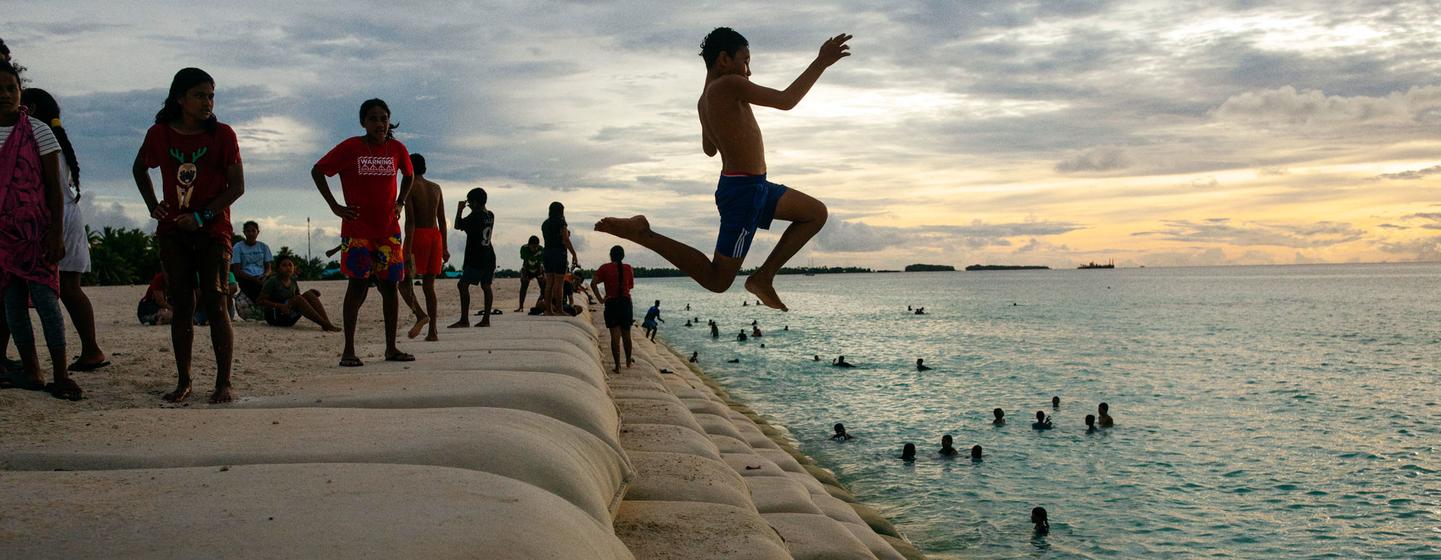
Over 18 million people in Bangladesh have been affected by severe monsoon conditions, with more than 1.2 million families trapped as flash floods submerge vast areas of the country’s east and southeast.
The worst affected regions are Chattogram and Sylhet, where major rivers are “flowing well above danger levels”, further aggravating the situation, according to the UN Children’s Fund (UNICEF).
Initial estimates suggest that around five million people - including two million children - have been affected, many stranded without food and relief.

Twenty deaths have been reported as of Tuesday, and a further 285,000 have sought refuge in more than 3,500 shelters, UNICEF added.
Massive damage has also been reported to roads, croplands, and fisheries, severely impacting livelihoods.
Government-led search and rescue operations are ongoing, with some areas inaccessible.
UN-partners in some places have reported that water levels are not expected to recede for at least a week, with risk of persistent waterlogging and accompanying threat of water- and vector-borne diseases.
Extraordinary rainfall in eastern India
The state of Tripura in eastern India was hit by extraordinary rainfall for over 72 hours roughly ten days ago, resulting in some of the most severe floods since 1983, according to local media.
The rains along with over 2,000 resulting landslides, reportedly affecting 1.7 million people, including around 117,000 who have been displaced to relief camps set up by district authorities.
Some 26 people are said to have been killed, the UN Office for the Coordination of Humanitarian Affairs (OCHA) said, citing officials.
A Government-led response is ongoing, with floodwater levels said to have been receding.
Multiple landslides were also reported in the northern state of Himanchal Pradesh since late July, leading to several casualties.

Climate change impacts in Nepal
The monsoon season also wreaked havoc in Nepal, a country on the frontlines of climate change, experiencing more erratic and intense weather and rapid warming of glaciers, leading to severe flash floods and landslides.
A glacial lake outburst flood (GLOF) in the country’s Everest region wiped off the village of Thame, situated at an altitude of about 3,800 metres (12,500 feet) and popular with trekkers.
Though no deaths or serious injuries were reported, more than a dozen houses and small hotels, a school and a health clinic were washed away.
Elsewhere in the country, however, the 2024 monsoon season led to more than 200 deaths, including in the capital, Kathmandu.
In a particularly tragic incident, about 65 people died when two buses were pushed into a swollen river last month. Authorities have been able to recover the remains of only three people, with search efforts ongoing.
Response continues in Pakistan
In Pakistan, disasters claimed the lives of 243 people since July – about half of them children, underscoring their heightened vulnerability, OCHA reported.
Floods also resulted in “extensive damage” to livelihoods and vital infrastructure, including schools and bridges.
Assessments and response continue, with humanitarian partners and authorities reporting food, clean water, medical supplies and hygiene kits as key needs.
https://news.un.org/en/story/2024/08/1153726

















